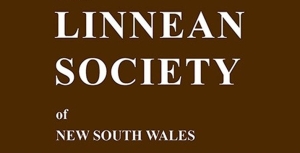Displaying items by tag: Kuringgai GeoRegion
Linnean Society Symposium
The northeastern Sydney Basin is bounded by Sydney Harbour to the south, the Hunter River to the north, the coastline to the east, and the boundary of Yengo National Park to the west. Much of this area lies within the distinctive lower Triassic Sydney Sandstone outcrop with its spectacular geomorphology and characteristic floral communities.
At the symposium, 16 papers were presented on current research into the geology and geodiversity, flora, fauna and Aboriginal occupation of the region. The afternoon session promoted the concept of a Ku-ring-gai GeoRegion (click here to buy a copy of these papers).
Stephen Gale spoke on the origin of the Hawkesbury River and its varying paths; Wendy Grimm explained her research into the endangered lesser-known terrestrial orchid Genoplesium baueri; Michael Gillings and Vanessa McPherson presented their findings on local fungi (a welcome reminder of their talk to STEP last year); Jonathan Sanders gave clues to the vegetation you might find around local volcanic dykes; Doug Benson’s subject was the last glacial maximum and its effects on our plants; and Chris Mays’ group looked at mass extinctions in an end-Permian event and the causative role of climate change.
The Ku-ring-gai GeoRegion project aims to unify the much-loved values of Sydney’s northern natural areas through geosites and geotrails. The project includes Ku-ring-gai Chase National Park, the Northern Beaches coastline, Muogamarra Nature Reserve and the eastern section of the Berowra Valley National Park.
John Martyn, eminent geologist and STEP committee member, spoke of the unique geological formations; Ian Percival spoke on the Hornsby Diatreme whose western face he has worked hard to preserve for the public; John Illingsworth and Peter Mitchell showed how drones can help produce 3D photogrammetric models and digital elevation models, that is to say, fantastic pictures of the Northern Beaches cliffs!
Jayden Walsh described the varied fauna; Bob Conroy related Aboriginal sites to landscape features; David Robson noted benefits to tourism; Angus Robinson concluded the day broadening our local project within an Australia-wide movement: in 2021 the Australian Geoscience Council launched its National Geotourism Strategy. Its aim is to enrich nature-based tourism, the main motivator for travel to Australia, embracing the ABC of tourism: abiotic landscapes and geology, biotic flora and fauna and cultural Aboriginal history.
The symposium was ideal for participants with an interest in the area but not necessarily scientific training. The Linnean Society of NSW has done an excellent job with the symposium and the field day visiting our scenic wonders.
Since 2010 the Linnean Society NSW has been organising field symposia highlighting aspects of natural history. In November 2022 they hosted a symposium entitled Natural History of the Northeastern Sydney Basin. Thanks to Margery Street for this summary.
Plan to establish a UNESCO georegion in northern Sydney
The Friends of Ku-ring-gai Environment (FOKE) has initiated a fascinating project aiming to gain aspiring georegion status for the Ku-ring-gai region.
UNESCO global geoparks are single, unified geographical areas where sites and landscapes of international geological significance are managed with a holistic concept of protection, education and sustainable development. The Ku-ring-gai region is well known for its significant natural and cultural heritage values. The georegion would cover the national parks as well as the coastal cliffs and lagoons. An integral part of a georegion is the development of geotourism projects such as educational trails focussing on the geology and landscape.
FOKE has support from local councils, the National Parks and Wildlife Service, community groups and politicians. They have had significant support from the Australian Geoscience Council and the Linnean Society of NSW.


